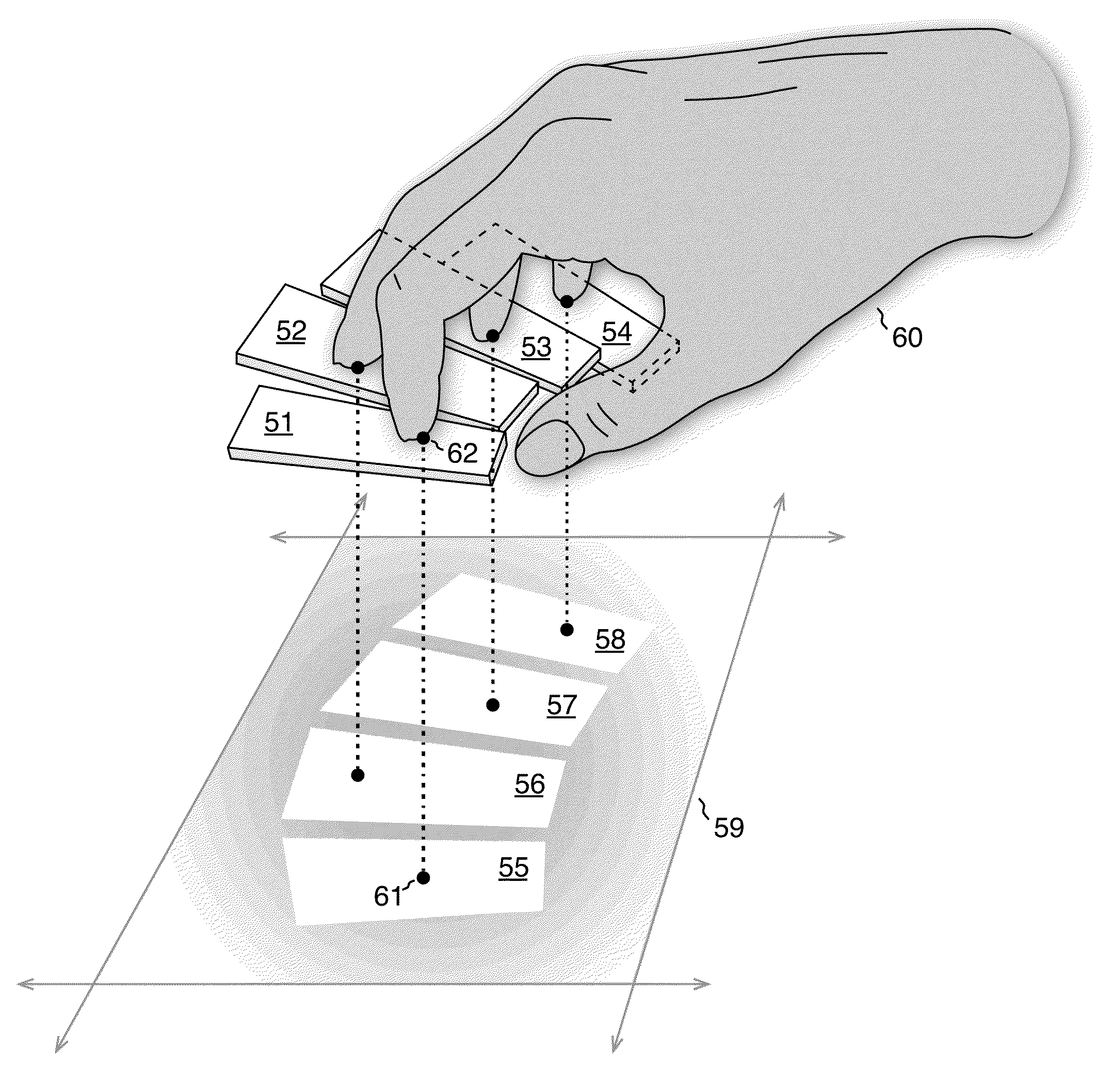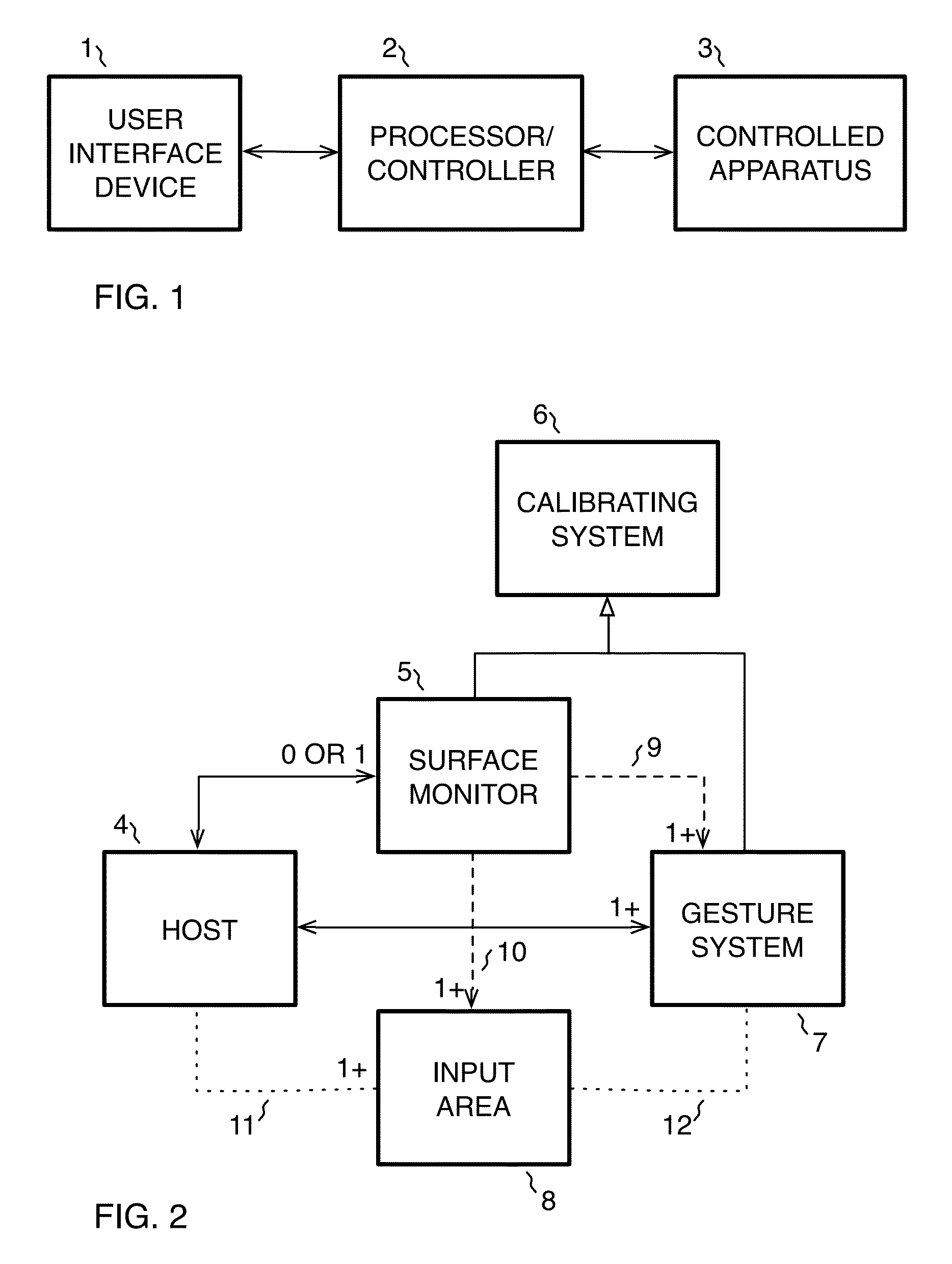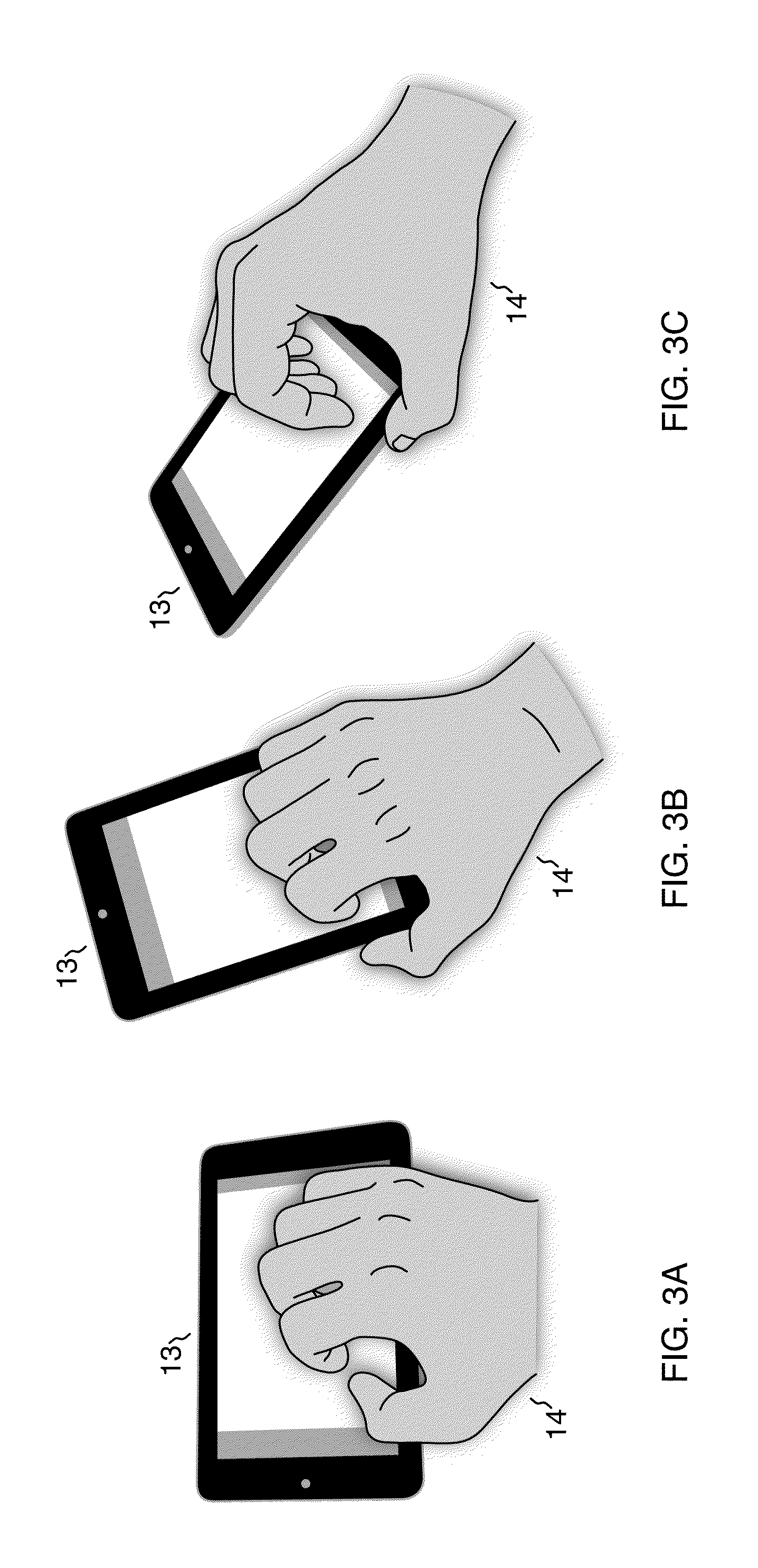Finger-mapped character entry systems
a character entry and finger mapping technology, applied in the field of user interface technology, can solve the problems of inability to provide feedback on the sensitive surface, the system does not provide more than one region for the finger, etc., and achieve the effect of reliably targeting specific areas, rapid data input, and rapid movemen
- Summary
- Abstract
- Description
- Claims
- Application Information
AI Technical Summary
Benefits of technology
Problems solved by technology
Method used
Image
Examples
Embodiment Construction
7.1 System Architecture
[0116]A user inputs a finger-mapped gesture into a “touch device” that includes one or more surfaces that the user touches. Each of these surfaces is called a “facet.” The facets may support multiple hands or they may operate together in a way that supports input across them by a single hand. It is sufficient for a touch device to have a single facet on which multiple fingers of a single hand may gesture. To simplify exposition, this specification maps the surfaces of all of the facets to a single mathematical surface called a “gesture surface,” so that each facet occupies a portion of the gesture surface. One or more areas of the gesture surface—each encompassing portions of one or more facets—are designated for receiving finger-mapped gestures. Each of these areas is called an “input area”8. A class of program called a “gesture system”7 monitors each input area for gestures and translates the gestures into “users requests,” which it sends to an external host...
PUM
 Login to View More
Login to View More Abstract
Description
Claims
Application Information
 Login to View More
Login to View More - R&D
- Intellectual Property
- Life Sciences
- Materials
- Tech Scout
- Unparalleled Data Quality
- Higher Quality Content
- 60% Fewer Hallucinations
Browse by: Latest US Patents, China's latest patents, Technical Efficacy Thesaurus, Application Domain, Technology Topic, Popular Technical Reports.
© 2025 PatSnap. All rights reserved.Legal|Privacy policy|Modern Slavery Act Transparency Statement|Sitemap|About US| Contact US: help@patsnap.com



